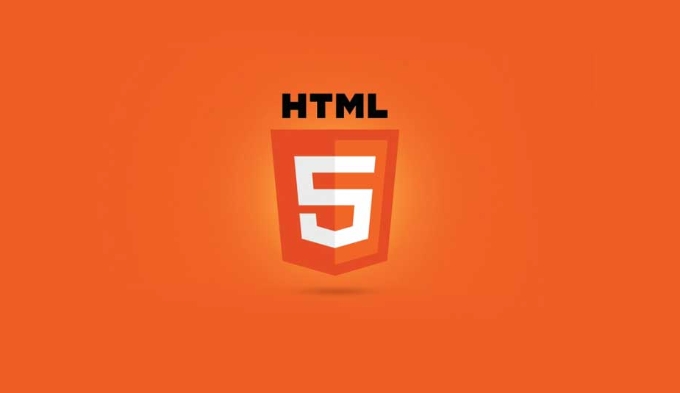The core of solving the performance problem of "off-screen content" on the mobile terminal of H5 page is to control its loading timing and method. Specific measures include: 1. Delay loading pictures and components, using IntersectionObserver to monitor the viewport entry events, and priority loading of the first screen content; 2. Loading content in chunks to avoid excessive rendering at one time, using the skeleton screen to occupy the place-by-place and dynamically inserting the real content; 3. Delay the execution of animations and scripts until the corresponding elements enter the viewport, reducing the initial load; 4. Using the skeleton screen to improve user perception and experience and alleviate waiting anxiety. These methods can effectively optimize the speed of the first screen and improve the user experience.

When the H5 page is loaded on the mobile terminal, it often encounters problems that "off-screen content" affects performance. Simply put, if content that users cannot see at the beginning is also loaded together, it may slow down the first screen speed and even waste resources. The core of solving this problem is to control the loading timing and method of off-screen content .

Delay loading pictures and components
Many H5 pages will request all pictures back at once, even if they are off-screen. This not only wastes traffic, but also slows down the first screen.
- Images can be loaded using Lazy Load and then loaded when scrolling to the visible area quickly.
- Components can also do similar processing, such as some folded panels and bottom advertising spaces, which do not render or only occupy a single position.
Implementation method:

- Use IntersectionObserver to listen to whether an element enters the viewport
- The picture can be used with
<img src="/static/imghw/default1.png" data-src="https://img.php.cn/upload/article/000/000/000/175278097395583.jpeg" class="lazy" loading="lazy" alt="H5 Content Visibility for Offscreen Content Performance" >, and the compatibility is already good - Lazy loading functions provided by third-party libraries such as LazyLoad.js or Vue/Lodash can also be used.
After doing this, the page opens faster and the user experience is better, especially for users who are not very good at the network.
Load content in chunks to avoid too much rendering at once
Sometimes there is too much content on a page, and it will be rendered all the time regardless of whether it is on the screen or not, and the result will be a long time for lag or white screen.

The recommended approach is:
- Split the content according to the module and give priority to rendering the visible part
- The off-screen module can be rendered without rendering before the user scrolls, or only the skeleton screen is retained
- Dynamically insert real content when scrolling nearby
For example, on the e-commerce details page, the evaluation area is not on the screen at the beginning, so you can leave a skeleton structure and wait until the user slides over before pulling the data to render. This not only saves initial resources, but also improves interaction speed.
Pay attention to animation and script execution timing
Some pages like to play various animations as soon as they come up, or run a bunch of scripts. In fact, if these operations are applied to off-screen elements, they are completely redundant.
Optimization suggestions:
- Try to wait until the element appears in the viewport before triggering the animation
- If script logic is prepared for off-screen content, delay execution or loading on demand
- You can use scroll or resize events to determine when to activate
For example, a parallax scrolling effect, if enabled only when the user scrolls to that area, will not affect the initial performance.
Use the skeleton screen to enhance perception experience
Although it does not directly reduce the burden of off-screen content, the skeleton screen can effectively alleviate users' waiting anxiety. It is equivalent to displaying a rough layout structure before the real content is loaded.
- The skeleton screen is small in size and loads quickly
- What users see is structured placeholding and will not feel blank
- Combining lazy loading, both vision and performance can be taken into account
Many frameworks now have ready-made skeleton screen plug-ins, which can be generated in advance during development, or they can be dynamically built based on the interface return.
Basically these ideas. Controlling the loading order, on-demand rendering, and delayed execution are all based on the principle of "the user is not in a hurry to deal with what is currently invisible". It doesn't seem complicated, but it's easy to ignore the details, especially when the project is rushing to progress.
The above is the detailed content of H5 Content Visibility for Offscreen Content Performance. For more information, please follow other related articles on the PHP Chinese website!

Hot AI Tools

Undress AI Tool
Undress images for free

Undresser.AI Undress
AI-powered app for creating realistic nude photos

AI Clothes Remover
Online AI tool for removing clothes from photos.

Clothoff.io
AI clothes remover

Video Face Swap
Swap faces in any video effortlessly with our completely free AI face swap tool!

Hot Article

Hot Tools

Notepad++7.3.1
Easy-to-use and free code editor

SublimeText3 Chinese version
Chinese version, very easy to use

Zend Studio 13.0.1
Powerful PHP integrated development environment

Dreamweaver CS6
Visual web development tools

SublimeText3 Mac version
God-level code editing software (SublimeText3)
 Adding drag and drop functionality using the HTML5 Drag and Drop API.
Jul 05, 2025 am 02:43 AM
Adding drag and drop functionality using the HTML5 Drag and Drop API.
Jul 05, 2025 am 02:43 AM
The way to add drag and drop functionality to a web page is to use HTML5's DragandDrop API, which is natively supported without additional libraries. The specific steps are as follows: 1. Set the element draggable="true" to enable drag; 2. Listen to dragstart, dragover, drop and dragend events; 3. Set data in dragstart, block default behavior in dragover, and handle logic in drop. In addition, element movement can be achieved through appendChild and file upload can be achieved through e.dataTransfer.files. Note: preventDefault must be called
 Using ARIA attributes with HTML5 semantic elements for accessibility
Jul 07, 2025 am 02:54 AM
Using ARIA attributes with HTML5 semantic elements for accessibility
Jul 07, 2025 am 02:54 AM
The reason why ARIA and HTML5 semantic tags are needed is that although HTML5 semantic elements have accessibility meanings, ARIA can supplement semantics and enhance auxiliary technology recognition capabilities. For example, when legacy browsers lack support, components without native tags (such as modal boxes), and state updates need to be dynamically updated, ARIA provides finer granular control. HTML5 elements such as nav, main, aside correspond to ARIArole by default, and do not need to be added manually unless the default behavior needs to be overridden. The situations where ARIA should be added include: 1. Supplement the missing status information, such as using aria-expanded to represent the button expansion/collapse status; 2. Add semantic roles to non-semantic tags, such as using div role to implement tabs and match them
 Securing HTML5 web applications against common vulnerabilities
Jul 05, 2025 am 02:48 AM
Securing HTML5 web applications against common vulnerabilities
Jul 05, 2025 am 02:48 AM
The security risks of HTML5 applications need to be paid attention to in front-end development, mainly including XSS attacks, interface security and third-party library risks. 1. Prevent XSS: Escape user input, use textContent, CSP header, input verification, avoid eval() and direct execution of JSON; 2. Protect interface: Use CSRFToken, SameSiteCookie policies, request frequency limits, and sensitive information to encrypt transmission; 3. Secure use of third-party libraries: periodic audit dependencies, use stable versions, reduce external resources, enable SRI verification, ensure that security lines have been built from the early stage of development.
 Integrating CSS and JavaScript effectively with HTML5 structure.
Jul 12, 2025 am 03:01 AM
Integrating CSS and JavaScript effectively with HTML5 structure.
Jul 12, 2025 am 03:01 AM
HTML5, CSS and JavaScript should be efficiently combined with semantic tags, reasonable loading order and decoupling design. 1. Use HTML5 semantic tags, such as improving structural clarity and maintainability, which is conducive to SEO and barrier-free access; 2. CSS should be placed in, use external files and split by module to avoid inline styles and delayed loading problems; 3. JavaScript is recommended to be introduced in front, and use defer or async to load asynchronously to avoid blocking rendering; 4. Reduce strong dependence between the three, drive behavior through data-* attributes and class name control status, and improve collaboration efficiency through unified naming specifications. These methods can effectively optimize page performance and collaborate with teams.
 Using HTML5 Semantic Elements for Page Structure
Jul 07, 2025 am 02:53 AM
Using HTML5 Semantic Elements for Page Structure
Jul 07, 2025 am 02:53 AM
Using HTML5 semantic tags can improve web structure clarity, accessibility and SEO effects. 1. Semantic tags such as,,,, and make it easier for the machine to understand the page content; 2. Each tag has a clear purpose: used in the top area, wrap navigation links, include core content, display independent articles, group relevant content, place sidebars, and display bottom information; 3. Avoid abuse when using it, ensure that only one per page, avoid excessive nesting, reasonable use and in blocks. Mastering these key points can make the web page structure more standardized and practical.
 HTML5 video not playing in Chrome
Jul 10, 2025 am 11:20 AM
HTML5 video not playing in Chrome
Jul 10, 2025 am 11:20 AM
Common reasons why HTML5 videos don't play in Chrome include format compatibility, autoplay policy, path or MIME type errors, and browser extension interference. 1. Videos should be given priority to using MP4 (H.264) format, or provide multiple tags to adapt to different browsers; 2. Automatic playback requires adding muted attributes or triggering .play() with JavaScript after user interaction; 3. Check whether the file path is correct and ensure that the server is configured with the correct MIME type. Local testing is recommended to use a development server; 4. Ad blocking plug-in or privacy mode may prevent loading, so you can try to disable the plug-in, replace the traceless window or update the browser version to solve the problem.
 Embedding video content using the HTML5 `` tag.
Jul 07, 2025 am 02:47 AM
Embedding video content using the HTML5 `` tag.
Jul 07, 2025 am 02:47 AM
Embed web videos using HTML5 tags, supports multi-format compatibility, custom controls and responsive design. 1. Basic usage: add tags and set src and controls attributes to realize playback functions; 2. Support multi-formats: introduce different formats such as MP4, WebM, Ogg, etc. through tags to improve browser compatibility; 3. Custom appearance and behavior: hide default controls and implement style adjustment and interactive logic through CSS and JavaScript; 4. Pay attention to details: Set muted and autoplay to achieve automatic playback, use preload to control loading strategies, combine width and max-width to achieve responsive layout, and use add subtitles to enhance accessibility.
 Drawing Graphics and Animations using HTML5 Canvas
Jul 05, 2025 am 01:09 AM
Drawing Graphics and Animations using HTML5 Canvas
Jul 05, 2025 am 01:09 AM
HTML5Canvas is suitable for web graphics and animations, and uses JavaScript to operate context drawing; ① First add canvas tags to HTML and get 2D context; ② Use fillRect, arc and other methods to draw graphics; ③ Animation is achieved by clearing the canvas, redrawing, and requestAnimationFrame loops; ④ Complex functions require manual processing of event detection, image drawing and object encapsulation.






